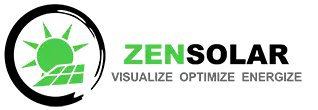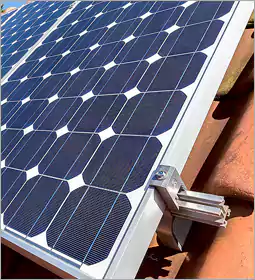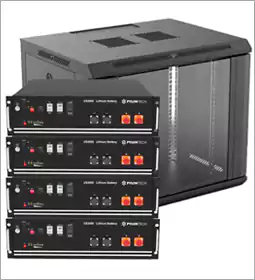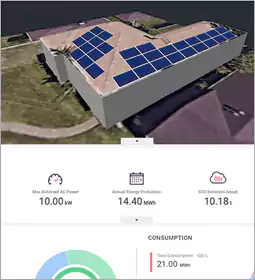The Pros & Cons of Solar
Before 'going solar' it makes sense to weigh up the pros and cons of solar. This way you make the right investment for you. Here are some things to look out for
What is it you are investing in? Is it a solar system, power independence or backup power for when Eskom has irraticle load shedding, reducing your electricity bill or simply having a greener footprint?
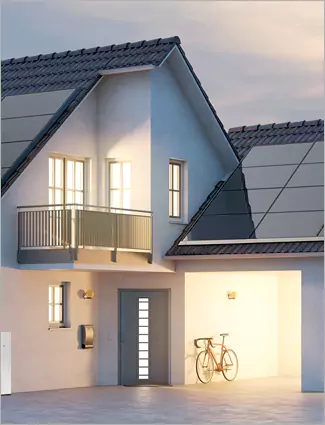
Advantages of Solar Energy
1. Renewable Energy Source
Among all the benefits of solar panels, the most important thing is that solar energy is a truly renewable energy source. It can be harnessed in all areas of the world and is available every day. We cannot run out of solar energy, unlike some of the other sources of energy.
Solar energy will be accessible as long as we have the sun, therefore sunlight will be available to us for at least 5 billion years when according to scientists the sun is going to die.
2. Reduces Electricity Bills
Since you will be meeting some of your energy needs with the electricity your solar system has generated, your energy bills will drop. How much you save on your bill will be dependent on the size of the solar system and your electricity or heat usage.
For example, if you are a business using commercial solar panels this switch can have huge benefits because the large system size can cover large chunks of your energy bills.
Moreover, not only will you be saving on the electricity bill, but there is also a possibility to receive payments for the surplus energy that you export back to the grid through the Smart Export Guarantee (SEG). If you generate more electricity than you use (considering that your solar panel system is connected to the grid).
3. Diverse Applications
Solar energy can be used for diverse purposes. You can generate electricity (photovoltaics) or heat (solar thermal). Solar energy can be used to produce electricity in areas without access to the energy grid, to distil water in regions with limited clean water supplies and to power satellites in space.
Solar energy can also be integrated into the materials used for buildings. Not long ago Sharp introduced transparent solar energy windows.
4. Low Maintenance Costs
Solar energy systems generally don’t require a lot of maintenance. You only need to keep them relatively clean, so cleaning them a couple of times per year will do the job.
Most reliable solar panel manufacturers offer 20-25 years warranty.
Also, as there are no moving parts, there is no wear and tear. The inverter is usually the only part that needs to be changed after 5-10 years because it is continuously working to convert solar energy into electricity and heat (solar PV vs. solar thermal). Apart from the inverter, the cables also need maintenance to ensure your solar power system runs at maximum efficiency.
So, after covering the initial cost of the solar system, you can expect very little spending on maintenance and repair work.
5. Technology Development
Technology in the solar power industry is constantly advancing and improvements will intensify in the future. Innovations in quantum physics and nanotechnology can potentially increase the effectiveness of solar panels and double, or even triple, the electrical input of the solar power systems.
6. Improves property value
Studies of the real estate market have proven that homes equipped with a solar power system sell for more than their non-solar counterparts.
It’s no question that solar power systems substantially increase property value. Homebuyers see solar as a major selling point, and they’re willing to pay a premium to move into a solar-powered home.
However, there is one issue to look out for, and that is buying a home that has a Power Purchase Agreement in place which the new buyer "inherits" as part of the purchase agreement, and these are usually "tight" and can be (if at all) difficult to get out of.
The Cons
1. Batteries Are Still Expensive
Batteries are not required for solar systems, but they can help maximize a system’s value. Homeowners can rely on stored solar generation at peak grid times, thereby avoiding higher utility electricity costs. While battery costs continue to decrease, however, the overall cost is still considerable.
2. High Upfront Cost
In order to get your "power independence and reduced costs" investment, the home owner needs to put their hand in their pocket or get supported by a financier.
However, solar should be thought of as a secure, long term investment. Not only will immediately reduce electricity costs, it also reduces homeowners’ dependence on their utilities. There are no more electricity rate raises with solar – the energy input is always free!
Of course, you’re paying for at least 25 years of energy production upfront. In the long term, you break even on the investment and start to make money, but that doesn’t change the fact that not everyone has the wherewithall to get their solar dreams off the ground.
The up-front cost is the main barrier to going solar. Financing options are available, and the payback period is quite favorable even when you take interest into account. However, not everyone wants to be on the hook for loan payments.
3. Solar Panels Don’t Move With You
Unfortunately, solar panels won’t pack up and move with you. They’re a long term investment, so if you’re planning on moving in the near future it may not make financial sense to purchase a system now.
As mentioned, solar panels do help homes sell more quickly and for more money. Even if you move, you’ll likely recoup the cost of your solar system — and perhaps even come out ahead — through the added value to your home.
4. It takes up a lot of space
Standard solar panels measure 1m wide by either 1.6m to 2.0m tall (for 60-cell and 72-cell panels, respectively).
To offset the national average of 897 kWh of electricity per month, you’d need at least 24 panels. In an 8×3 configuration, that system will be ~40 m2. That’s going to take up a lot of room on your roof or in your yard.
Most people opt for a roof mount because it takes advantage of space that would otherwise go unused. However, 'work' is done on the roof tiles itself, so the workmanship needs to be of the highest standard.
Battery backup power also requires space, and this needs to provide the right temperatures - so that batteries can obtain a maximum lifespan.
5. If your electricity costs are low, so are your solar savings
The ultimate benefit of solar energy is that it will reduce your use of utility-provided electricity and save you money every month as a result. However, that condition assumes a homeowner has sizable electric bills to begin with. For a homeowner in a state like Louisiana where the cost of electricity is 25+ percent lower than the national average, installing a solar panel system isn’t nearly as attractive as it is to a Hawaii homeowner who pays more than double the average electric rate.
6. If you can’t access solar financing, up-front solar costs can be intimidating
There’s a nationwide debate going on about how much homeowners have to pay out-of-pocket for solar. The total out-of-pocket price tag for a solar panel system depends on tax credits, rebates, and the financing option you choose. Though you can easily get a figure for the average cost of solar in your state or even a personalized estimate for your home, the simple answer is that the up-front cost of solar is sizable if you don’t qualify for a zero-down solar loan
The disadvantage of solar energy here is clear: not everyone has the cash on hand to make an investment of this size with an up-front payment. That being said, there are a number of solar financing options to help you get around this solar con such as state-backed loan programs, leases and power purchase agreements.
Talk to a solar expert to assist you if you are still not sure of the above.
